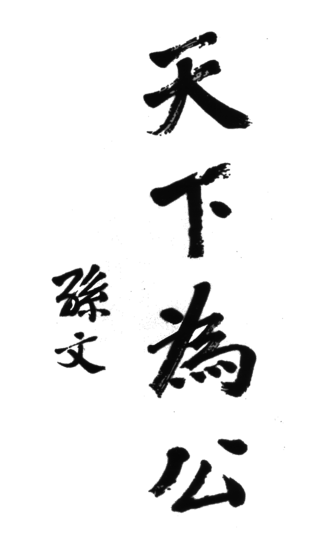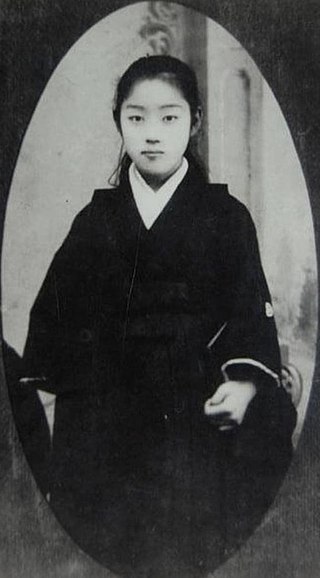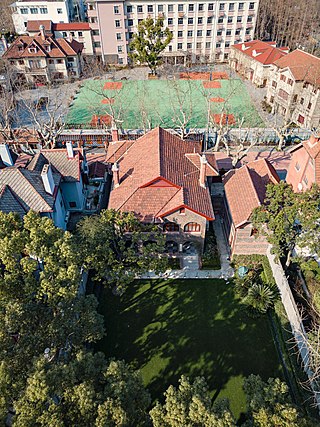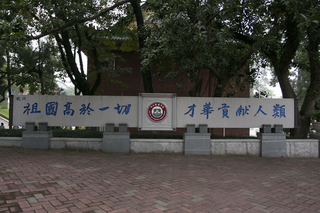
Sun Yat-sen was a Chinese revolutionary statesman, physician, and political philosopher who served as the first provisional president of the Republic of China and the first leader of the Kuomintang. He is called the "Father of the Nation" in the present-day Republic of China (Taiwan) and the "Forerunner of the Revolution" in the People's Republic of China for his instrumental role in the overthrow of the Qing dynasty during the 1911 Revolution. Sun is unique among 20th-century Chinese leaders for being widely revered by both the Communist Party in Mainland China and the Nationalist Party in Taiwan.

Zhongshan is a prefecture-level city in the south of the Pearl River Delta in Guangdong province, China. As of the 2020 census, the whole city with 4,418,060 inhabitants is now part of the Guangzhou–Shenzhen conurbation with 65,565,622 inhabitants. The city-core subdistricts used to be called Shiqi or Shekki.

The 1911 Revolution, also known as the Xinhai Revolution or Hsinhai Revolution, ended China's last imperial dynasty, the Manchu-led Qing dynasty, and led to the establishment of the Republic of China. The revolution was the culmination of a decade of agitation, revolts, and uprisings. Its success marked the collapse of the Chinese monarchy, the end of 2,132 years of imperial rule in China and 276 years of the Qing dynasty, and the beginning of China's early republican era.

Cuiheng is a village of the town of Nanlang, Zhongshan, Guangdong province. Cuiheng is best known as the birthplace of Dr. Sun Yat-sen, the "Father of the Nation" of the Republic of China. Cuiheng is 17.6 kilometres (10.9 mi) southeast of downtown Zhongshan, and 26 km (16 mi) north of Macau. The whole village is designated a special economic district, as Cuiheng New Area.

Dai Jitao or Tai Chi-t'ao was a Chinese journalist, an early Kuomintang member, and the first head of the Examination Yuan of the Republic of China. He is often referred to as Dai Chuanxian or by his other courtesy name, Dai Xuantang.

Sun Yat-sen University is a public university in Guangzhou, Guangdong, China. It is affiliated with the Ministry of Education, and co-funded by the Ministry of Education, SASTIND, and Guangdong Provincial Government. The university is part of Project 985, Project 211, and the Double First Class University Plan.

The Hsing Chung Hui, translated as the Revive China Society (興中會), the Society for Regenerating China, or the Proper China Society was founded by Sun Yat-sen on 24 November 1894 to forward the goal of establishing prosperity for China and as a platform for future revolutionary activities. It was formed during the First Sino-Japanese War, after a string of Chinese military defeats exposed corruption and incompetence within the imperial government of the Qing dynasty. The Revive China Society went through several political re-organizations in later years and eventually became the party known as the Kuomintang. As such, the contemporary Kuomintang considers its founding date to be the establishment of Revive China Society.

The Nanjing Botanical Garden Memorial Sun Yat-Sen, established in 1929, became the first national botanical garden in China. The original name, 'Botanical Garden Memorial Sun Yat-Sen', commemorated Dr. Sun Yat-Sen, the pioneer of Chinese democratic revolution. In 1954, it was renamed as Nanjing Botanical Garden Mem. Sun Yat-Sen, Chinese Academy of Sciences. It is one of four major botanical gardens in China. The botanical garden is also known as Zhongshan Botanical Garden after the spelling of its name in pinyin.
Zhongshan (中山市) is a prefecture-level city in Guangdong province, People's Republic of China.

National Sun Yat-sen University is a public research university located in Sizihwan, Kaohsiung, Taiwan. NSYSU is listed as one of six national research universities, and one of four universities that make up the Taiwan Comprehensive University System, a research-led university alliance in Taiwan. With AACSB and CFA accredited and the number one maritime management program in Asia, the NSYSU College of Management is among the best in East Asia, and the College of Marine Sciences is the oldest and highest ranked in Taiwan.

Like many Chinese, Sun Yat-sen used different names at different points in his life and he is known in Chinese under several of them. Names are not taken lightly in Chinese culture. This reverence goes as far back as Confucius and his insistence on "rectification of names."

Sun Yat-sen House is located in the South Garden of Gulou Campus of Nanjing University in Nanjing, Jiangsu, China. It's said that Sun Yat-sen, the first president of the Republic of China, lived there in 1910s.

SS Zhongshan, formerly romanized as Chung Shan, was a Chinese gunboat built in Japan in 1913. It was originally known as SS Yongfeng, before being renamed in 1925 in honor of Sun Yat-sen. Zhongshan was sunk by the Imperial Japanese Navy during the Second Sino-Japanese War, but was later raised and restored as a museum ship in Wuhan.
中山 is an East Asian name composed of two characters which individually mean "middle" or "centre" and "mountain" or "hill".

Zhongshan Square is a city square in the Zhongshan District of Dalian, Liaoning, China named for Sun Yat-sen ; originally designed and built by the Russians in the 19th century. Several classical buildings are located on the square, which were built during the first half of the 20th century by the Japanese.

Kaoru Otsuki was a Japanese woman known for being the second wife of Sun Yat-sen, the founder and first president of the Republic of China.

Tōten Miyazaki or Torazō Miyazaki was a Japanese philosopher who aided and supported Sun Yat-sen during the Xinhai Revolution. While Sun was in Japan, he assisted Sun in his travels as he was wanted by Qing dynasty authorities.

The Former Residence of Sun Yat-sen, located at 7 Xiangshan Road in the French Concession area of Shanghai, China, near Fuxing Park to the east, was the residence of the Chinese revolutionary Dr. Sun Yat-sen (1866–1925)

Sun Yat-sen Memorial Secondary School, was established in memory of Sun Yat-sen, the founding father of the Republic of China and the Premier of the Kuomintang in 1934. The school is located in Cuiheng Village, Zhongshan, Guangdong, China. Cuiheng Village is Sun Yat-sen's hometown. It is next to the former residence of Sun Yat-sen. There are 120 home classes in the full boarding school with more than 7000 students.
















